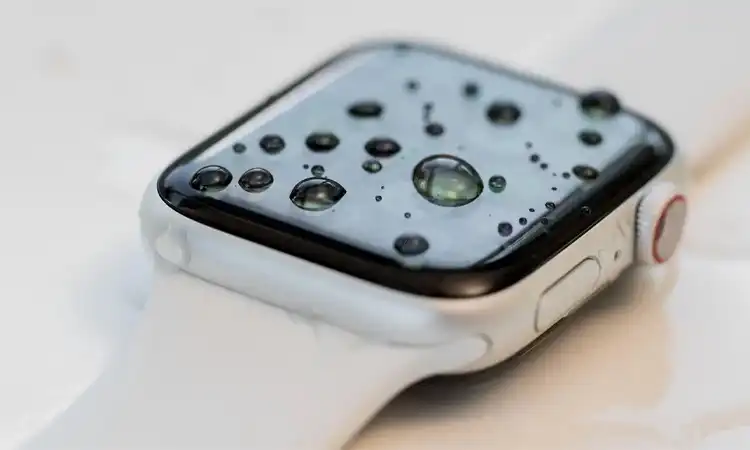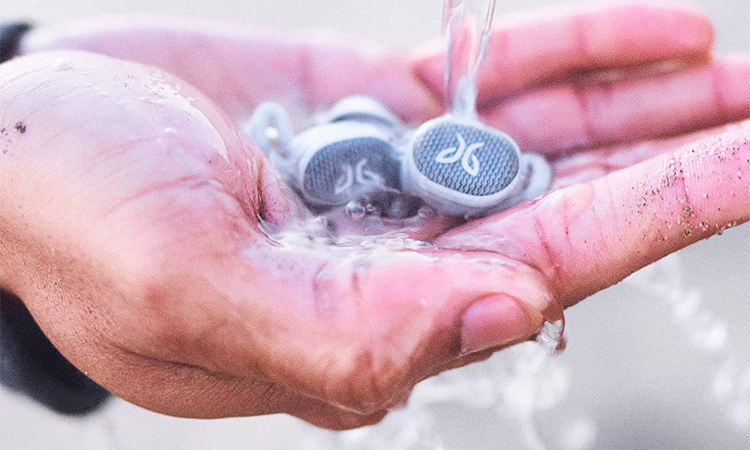When it comes to protecting our valuable belongings from water damage, we often encounter terms like “splash proof” and “waterproof.” But what do these terms really mean? Are they interchangeable? Which one should you choose for your specific needs? In this article, we’ll delve into the differences between splash proof and waterproof technologies, helping you make an informed decision and ensure adequate water protection for your belongings.
Splash Proof Meaning
Splash proof refers to a product’s ability to resist water or other liquid splashes. This means that the product can withstand minor exposure to water but cannot be fully submerged without risk of damage. Splashproof products are often used for activities such as light rain, hand washing, or accidental spills.

The term “splash proof” is commonly used for electronic devices like smartphones, smartwatches, and cameras. Splash proof devices are designed to have sealed or covered ports and buttons to prevent water from getting inside. However, they are not completely waterproof, and excessive exposure to water can still cause damage.
According to the International Electrotechnical Commission (IEC), splash-proof products are rated with an IPX4 rating. This means they can withstand water splashes from any direction. This rating is given to products tested by spraying them with water for at least five minutes from a distance of 10 centimeters. Splashproof products are ideal for everyday use and can provide some level of protection against water damage. But they should not be used when they are likely to be submerged in water.
Splash Proof Design
The design of splash proof products involves several key features that help to prevent water from getting inside. One of the most important features is using sealed or covered ports and buttons. These components are often the weakest points of electronic devices and must be protected from water to prevent damage. Splashproof products also have water-resistant coatings. It helps to repel water and prevent it from penetrating the device.
In addition to these features, splash-proof products may also have additional components that help to improve water resistance. For example, some smartphones have rubber gaskets around their SIM card trays to prevent water from entering through this opening. Other devices may have specially designed speakers and microphones resistant to water damage.
The materials used in splash-proof designs are also carefully selected. Many splashproof products use materials like plastic, rubber, and silicone to help protect against water damage. These materials are lightweight, durable, and can be easily molded to fit the unique shape of each device.
While splash proof products can provide some level of protection against water damage, they are not completely waterproof. That’s why you need to follow the manufacturer’s guidelines for use. It allows you to avoid exposing your splash-proof products to too much water or submerging them in water. By taking proper care of your splash-proof products, you can help ensure that they last longer and provide reliable performance.
Applications of SplashProof
Splash proof technology finds its applications in various industries and products. Electronic devices such as smartphones, smartwatches, and tablets often come with splash-proof features, safeguarding them against accidental spills, raindrops, or minor splashes. Additionally, splash proof coatings are commonly used on surfaces like countertops, kitchen appliances, and bathroom fixtures to repel water and prevent damage.
Waterproof Meaning
Waterproof refers to products designed to withstand full immersion in water without damage. These products are commonly used for outdoor activities such as swimming, diving, and snorkeling. Waterproof products have higher water resistance than splash-proof products and can be submerged in water for extended periods without damage.

The term “waterproof” is commonly used to describe various products. Including electronics, watches, clothing, and footwear. Waterproof products are designed to have a high level of water resistance and are often rated using the Ingress Protection (IP) rating system. This system measures a product’s ability to resist water and dust intrusion. It is commonly used for electronic devices and other products that must be protected from the elements. The first digit in the IP rating indicates the level of protection against solid objects like dust. The second digit indicates the level of protection against liquids like water.
Waterproof products typically have an IPX7 or IPX8 rating, which means they can withstand being submerged in water for a certain amount of time. For example, an IPX7 rating means the product can withstand immersion in water up to a depth of 1 meter for up to 30 minutes. An IPX8 rating means the product can withstand immersion in water for a longer period of time and at greater depths.
While waterproof products can provide excellent protection against water damage. However, you must be aware that not all waterproof products are equal. Some products may have different waterproof ratings. So you must carefully choose the right product for your specific conditions. In addition, even waterproof products can be damaged by prolonged exposure to water or exposure to high pressure. Therefore, properly caring for your waterproof products will ensure they get the longest possible life.
Waterproof Design
The design of waterproof products is critical to their ability to withstand full immersion in water. Waterproof products have various design features that help keep water out and prevent damage.
Waterproof products are designed to feature the use of specialized seals and gaskets. These components seal off the device’s interior and prevent water from getting inside. For example, many waterproof smartphones have rubber gaskets around the SIM card tray and headphone jack to prevent water from penetrating the device.
Second, waterproofing products are also made with high-quality waterproofing materials. These materials are specially designed to repel water and prevent it from seeping into the device. Common waterproof materials include Gore-Tex, rubber, and silicone. These materials help to protect the device’s internal components and prevent water damage.
Waterproof products also often have reinforced joints and seams to prevent water from entering through weak points. For example, a waterproof watch may have a screw-down crown to prevent water from entering the stem. Similarly, a waterproof camera may have reinforced seals around the battery and memory card compartments.
Finally, the overall design of waterproof products is often sleek and compact, making them easy to carry and use in wet environments. Many waterproof devices have a streamlined design with minimal buttons and ports to reduce the risk of water damage.
Overall, the design of waterproof products is critical to their ability to resist water damage. These products can provide reliable performance even in challenging environments by incorporating specialized seals, water-resistant materials, and reinforced joints.
Does Splash Proof Mean Waterproof?
While splashproof and waterproof may sound similar, they are not interchangeable terms. Splash proof refers to products that can withstand exposure to small amounts of water, such as splashes, but are not designed to be fully submerged in water.
Splash proof products typically have a lower level of water resistance than waterproof products. They may not be suitable for use in heavy rain or other situations where they will likely be exposed to significant amounts of water.
On the other hand, waterproof products are designed to withstand full immersion in water without damage. These products have a higher level of water resistance than splash-proof products and are suitable for use when they are likely to be submerged in water, such as swimming or diving.
When shopping for a product designed to resist water, it is important to consider its specifications and the IP rating system. A product’s IP rating will indicate its protection against water and other environmental factors.
In general, splash proof products are not as water-resistant as waterproof products and are not suitable for use when they are likely to be fully submerged in water. While a splash-proof product may resist small amounts of water, it may not withstand heavy rain or exposure to other environmental factors that can cause water damage.
Splash Proof vs. Waterproof: They are Different
Here’s a comparison chart that highlights the differences between splash proof and waterproof:
| Feature | Splash Proof | Waterproof |
|---|---|---|
| Water Resistance | Resistant to water splashes and light rain. | Can be submerged in water without damage. |
| Level of Protection | Provides basic protection against water damage. | Provides reliable protection against water damage. |
| Water resistance rating | Usually less than IPX6 | IPX7 or higher |
| Design Features | May have water-resistant materials and specialized seals, but not as extensive as waterproof design. | Specialized seals, gaskets, and water-resistant materials to prevent water from entering the device. |
| Intended Use | Suitable for use in light rain or splashes. | Suitable for use in water sports or activities. |
| Design features | Seals and gaskets to resist water penetration | Specialized water-resistant materials, reinforced joints and seams, streamlined design |
| Examples | Splash proof smartphone case, watch, backpack. | Waterproof camera, dive watch, dry bag. |
| Cost | Generally less expensive | Generally more expensive |
PS: The level of protection provided by a splash proof or waterproof product can vary depending on the specific product and its design. It’s always best to carefully review a product’s specifications and user reviews to determine whether it will meet your needs for water resistance.
Which is Better Waterproof or Water Repellent?
Whether waterproof or water repellent is better depends on the intended use and level of water exposure.
Waterproof products offer the highest level of protection against water damage, as they are designed to withstand full immersion in water without damage. They are suitable for activities such as swimming, diving, or working in wet environments.
On the other hand, water repellent products are designed to repel water and prevent it from penetrating the product’s surface. They are better for activities that involve exposure to light rain or splashes of water, such as hiking or running in the rain. Water repellent products are often more breathable and lightweight than waterproof products, making them more comfortable to wear.
The choice between waterproof and water repellent depends on the user’s specific needs. For example, if you plan to go snorkeling, a waterproof diving watch would be a better choice than a water repellent hiking watch. However, if you plan to hike in a rainy climate, a water repellent jacket may be more suitable than a heavy, waterproof jacket.
You must also look carefully at the product’s specifications and intended use. This will determine whether it is waterproof or water repellent. Look for products with high water resistance ratings and specialized features for your specific activity.
Understanding the differences between splashproof and waterproof can help you choose the right product for your needs. Whether you need protection against rain, splashes, or submersion, a range of options are available. By considering a product’s design, materials, and testing, you can ensure that it provides the level of protection you need.
About Splashproof and Waterproof FAQs
-
FAQ 1: Can a splashproof device be used in the rain?
While splash proof devices offer some resistance to water, it’s important to exercise caution when using them in the rain. Light rain or occasional splashes should not pose a problem. However, prolonged exposure to heavy rain or submersion can exceed the capabilities of splash proof technology, leading to potential damage.
-
FAQ 2: Can splash proof or waterproof technology wear off over time?
Both splash proof and waterproof technologies can degrade over time due to wear and tear or improper usage. It’s advisable to follow the manufacturer’s instructions for maintenance and care to ensure the longevity of the water-resistant properties. Regular inspections and replacements may be necessary, especially for items subjected to frequent exposure to water.
-
FAQ 3: Can I rely on the “splashproof” or “waterproof” product labels?
While product labels provide a general indication of the level of water protection, it’s essential to look beyond the labels and examine the manufacturer’s specifications. The IP rating mentioned earlier provides a more accurate assessment of the item’s water resistance capabilities. Relying solely on the product labels may lead to misunderstandings or inadequate protection for your belongings.
-
FAQ 4: Are there any additional accessories or precautions I should consider for water protection?
Additional accessories like protective cases, covers, or seals may enhance water protection depending on the specific item or device. It’s worth exploring such options to defend against water damage. Additionally, practicing proper handling and avoiding unnecessary water exposure can further prolong your belongings’ lifespan.
-
FAQ 5: What are the Different Levels of Waterproofing?
Several levels of waterproofing ratings indicate a product’s level of water resistance. The most commonly used ratings include IP67 and IP68, which indicate the level of protection against dust and water penetration. Other ratings, such as ATM or meters of water resistance, are used for watches and other water-resistant products. The specific rating system and criteria may vary depending on the industry and product.









